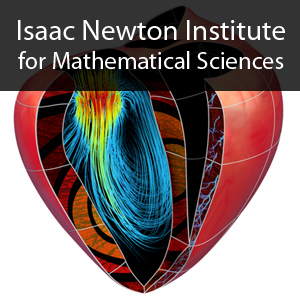Towards patient-specific simulations of atrial fibrillation
15 mins 24 secs,
56.90 MB,
iPod Video
320x240,
25.0 fps,
44100 Hz,
504.49 kbits/sec
Share this media item:
Embed this media item:
Embed this media item:
About this item

| Description: |
Weber, F (Karlsruhe (TH))
Thursday 23 July 2009, 14:30-14:45 |
|---|
| Created: | 2009-07-27 12:45 | ||||
|---|---|---|---|---|---|
| Collection: | Cardiac Physiome Project | ||||
| Publisher: | Isaac Newton Institute | ||||
| Copyright: | Weber, F (Karlsruhe (TH)) | ||||
| Language: | eng (English) | ||||
| Credits: |
|
||||
| Abstract: | Patient-specific cardiac simulations are approaching clinical applications. They could for example improve the treatment of atrial fibrillation (AF). Currently, many patients suffering from AF are treated with minimally-invasive catheter ablation. Using this technique, trigger sources for AF (mainly the pulmonary veins), are electrically isolated from the rest of the atrium. However, a large set of different ablation strategies is currently used in clinical practice. Therefore, the choice of a certain ablation strategy as well as the probability for successful and sustained AF termination are strongly dependent on the experience of the cardiologist. Atrial simulations could assist the cardiologist in the choice of a suitable method for an individual patient. For this, the atrial models have to be adapted to the patient. Besides anatomical modeling, several challenges must be faced in this process. First, an appropriate model of cellular electrophysiology and excitation conduction must be chosen. The model must provide the necessary accuracy and at the same time be fast enough for clinical applications. As a trade-off between accuracy and speed, we propose a minimal model adapted to atrial electrophysiology. Second, a main problem is the adaptation of physiological parameters in the patient-specific model as well as its validation. Therefore, an interface between clinical data and the model is needed. Data collected in standard clinical workflow are mainly intracardiac catheter ECGs. We therefore present techniques to model such catheter measurements. Signals from both circular mapping catheters (such as Lasso or Orbiter) as well as Coronary Sinus catheters can be simulated and compared to clinical signals. These are important steps towards clinical applications of atrial models. The long-term goal then is to assist the cardiologist in the choice of the best treatment for an individual patient. |
|---|---|
Available Formats
| Format | Quality | Bitrate | Size | |||
|---|---|---|---|---|---|---|
| MPEG-4 Video | 480x360 | 1.82 Mbits/sec | 212.05 MB | View | Download | |
| WebM | 450x360 | 629.01 kbits/sec | 70.56 MB | View | Download | |
| Flash Video | 480x360 | 800.13 kbits/sec | 90.25 MB | View | Download | |
| iPod Video * | 320x240 | 504.49 kbits/sec | 56.90 MB | View | Download | |
| QuickTime | 480x360 | 506.41 kbits/sec | 57.12 MB | View | Download | |
| MP3 | 44100 Hz | 125.0 kbits/sec | 13.90 MB | Listen | Download | |
| Windows Media Video | 478.83 kbits/sec | 54.01 MB | View | Download | ||
| Auto | (Allows browser to choose a format it supports) | |||||

